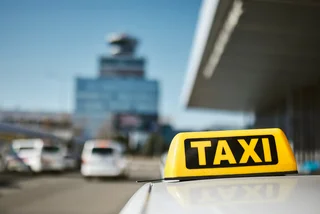The only mode of transport that strengthened in Prague after the declaration of a state of emergency on March 12, 2020, has been cycling.
Many people turned to cycling as a way of getting to work since public transit was cut back, and also trams and the metro were seen as places where social distancing was hard to maintain. It was also permitted as a form of exercise, while contact sports were not and indoor gyms were closed.
“The number of cyclists in the streets of Prague increased by 39% year-on-year after the declaration of a state of emergency. On the positive side, the number of people who regularly travel to work by bike has increased significantly,” Prague Deputy Mayor Adam Scheinherr (Praha sobě), responsible for transportation, said.
“Since the beginning of the restrictive measures, the year-on-year increase of these cyclists has been 47%, and in the last three weeks, while in the year-on-year comparison it was very cold and rainy, even 60%. The number of cyclists on weekends fluctuates depending on the weather, but the recreational use of bicycles also increased, by 26.1%,” he added.
The impact of the coronavirus pandemic on the increase in the number of cyclists is evident in all cities where cycling is still developing or is newly supported, such as London, Vienna or Bogota, but the fact that Prague residents began to “discover” bicycles as healthy this year, sustainable and environmentally friendly mode of transport is not a result of a pandemic alone, according to City Hall.
The city’s budget for cycling infrastructure is gradually increasing significantly. Specifically, in 2019 it was 121 million CZK and this year 170 million CZK, while in 2017, 17 million CZK were allocated for city cycling. The connection of isolated cycle paths in Bohnice, Kobylisy and Troja into one functional unit was accelerated.
The safety of pedestrians and cyclists increased thanks to new crossings, for example across nábřeží Kapitána Jaroše at the tax office, Plzeňská, Kamýcká or the city center in Divadelní street where new cycle lanes are marked. The recently opened Rokytka Water Passage (Vodní prostup Rokytka), an investment worth 48 million CZK, is one of the largest cycling events in recent years.
Prague has also supported other efforts to promote cycling, such as events with free service to get bikes back in running order.
According to the city management, if the positive trend of increasing the number of cyclists in the streets of Prague is to be stable, it is necessary to continue supporting bicycle transport. Therefore, the management of the Prague City Council has long been monitoring the possibility of restricting the passage of transit traffic along Smetanovo nábřeží and Malá Strana. Car traffic would be diverted to the inner ring road.
The city is also trying to identify and remedy other areas where excessive car traffic not only makes cycling dangerous, but also slows down trams and buses.
“Active transport is healthy for our body and spirit, but also for the city and the air that we all breathe in it. The development of cycling and pedestrian infrastructure in Prague is therefore a logical priority in the long run of a modern western-style city,” Scheinherr said.












 Reading time: 2 minutes
Reading time: 2 minutes 


 English
(Advanced)
English
(Advanced) German
(Advanced)
German
(Advanced)























